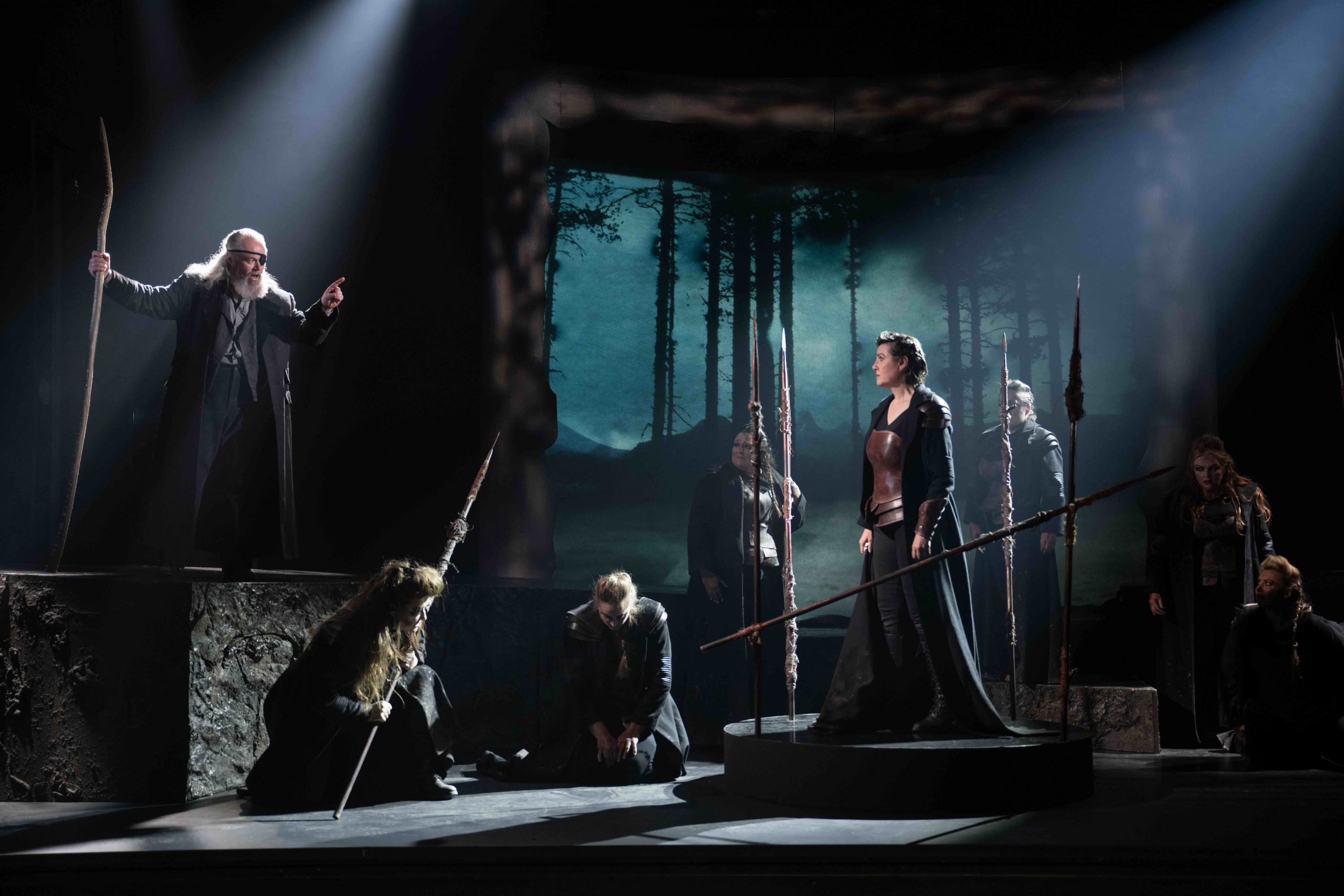
Wagner at Longborough really needs to be experienced as it is almost impossible to describe. But I will try.
It crossed my mind, sitting so close to the singers and orchestra in the small space with a correspondingly small stage, it felt a little like being in a village hall, not even as big as some large schools’ assembly halls with a stage at the end. Of course, the seating is more comfortable (old Royal Opera seats).
Contrast this with most large opera houses where unless you are in the front of the stalls the characters are visible but facial expressions, for example, are quite undiscernible. I saw one production at the Royal Opera and needed to look at photographs afterwards to even tell what the costumes looked like!
Here we have excellent singers with Wagnerian skills and experience who we can actually not only hear perfectly but see up close and personal. You can see the emotion wracking Lee Bisset as Brünnhilde as she is rejected by her father. Wotan’s joy and then despair is vividly acted by Paul Carey Jones matching the emotion, anger and frustration in his voice. The absolute hatred that Julian Close as Hunding spews out in song reduces his facial expression to utter ugliness in his encounters with Seigmund. This continues through the characters. Mark Le Brocq’s transformation from wounded hunted animal to enrapture with, well, his sister, is compelling and convincing. While Emma Bell as Seiglinde had her role quite remarkably sung by Eleanor Dennis from the side of the stage, her acting remained vivid and stark. Without sounding a little gross, when the singers enunciate with perfection the t/ds at the end of words it is not just the sound that is produced.


Then of course we have the focus and crystal-clear clarity of the instruments as the musicians respond to the conducting of Anthony Negus. Everything is so close that you can afford to glance to one side to see the tv monitor that shows Negus conducting and wait to watch how he will bring out the well-known leitmotifs for the different characters and situations and, of course, materials, such as that dreadful gold.
Madeleine Shaw sang Fricka with such gravitas that if anything she stood head and shoulders over our Wotan who was portrayed as an already physically and mentally failing troubled and despairing god. She was the power in that relationship and her will determined the events that were to follow.
Dramatically the Ride of the Valkyries was a bit of a mish mash but vocally and musically as fearsome as you would wish.
Then the concluding scene with Paul Carey Jones and Lee Bisset sharing what was more of a lovers’ parting as much as father and daughter farewell, contrasting with the ice-cold exchange between the god and his domineering, haughty wife.
There is not a vast amount to say about Amy Lane’s staging in this Ring which started for me on a thundery, wet night in what seems an age and was knocked out of kilter by Covid. I did not see the concert performance of Walkure and so saw this instalment out of sequence, after Seigfried and Gotterdammerung. If anything, there is less of note in this staging that the other three. The book in which characters write is there but not used very much so only takes your attention because you know it figures more in the other operas. There is much made of Wotan’s missing eye and we have other characters covering an eye symbolically as well. We still have Tim Baxter’s video projections of swirling clouds, fierce mountains, glades, valleys and forests. For the Walkure we have hooves galloping through water and then the flames for Brünnhilde’s rocky imprisonment.
There is nothing extravagant in this production from Emma Ryott’s costumes hinted with their Nordic look without being over the top, although I do seem to remember there are some mor fun elements in Siegfried.
The restriction of the staging is clear in the rather weak use of lighting such as during the Valkyries scene although it works well for the fiery ending. I suppose we need the drama of flashes of lightening etc, but other Longborough shows have been more pleasing without dramatic illuminations.
The lasting impression is one of wonder that this has been achieved and achieved so well, and not even for the first time in Longborough’s history.